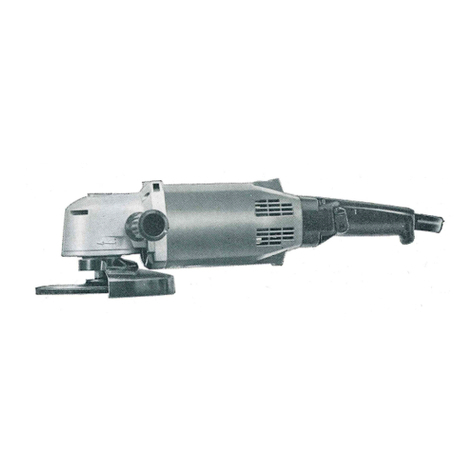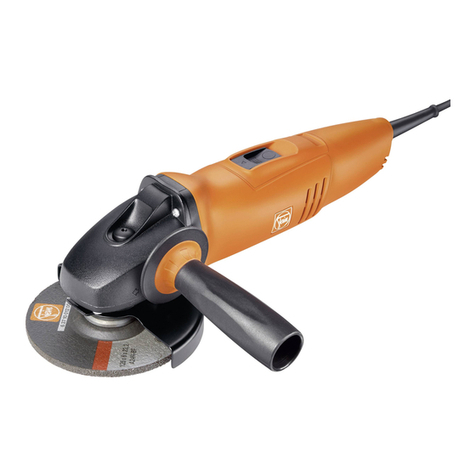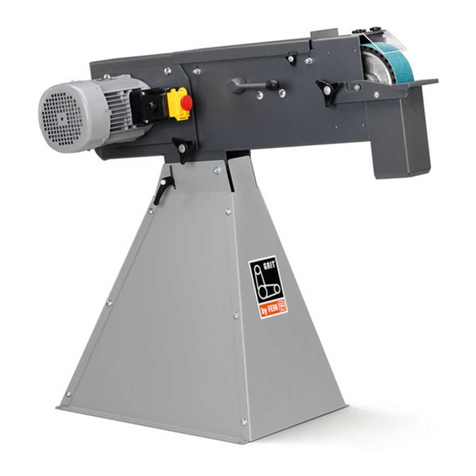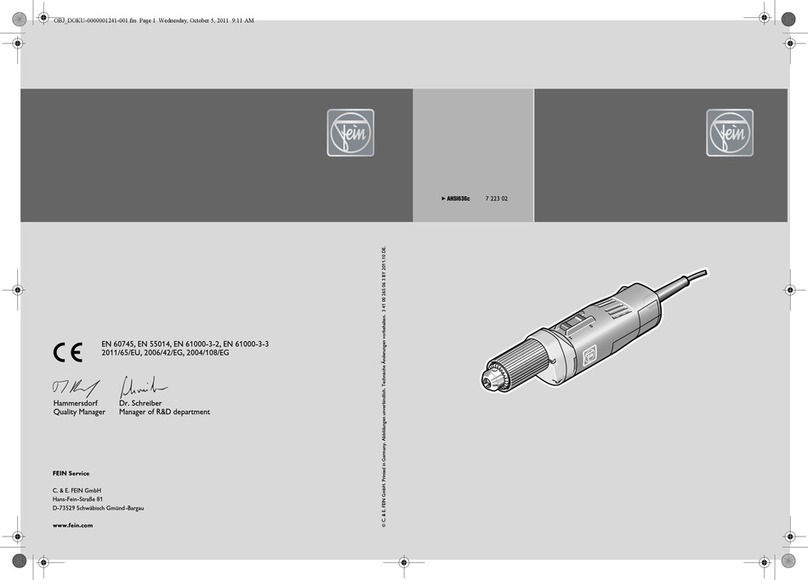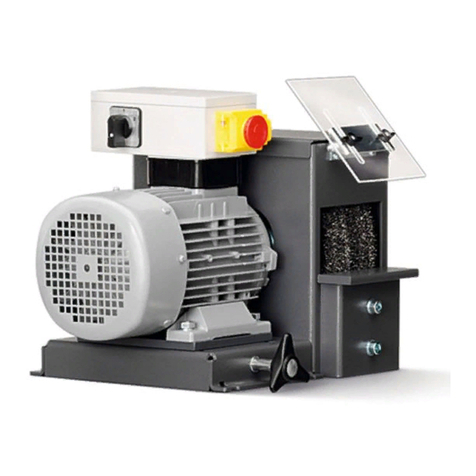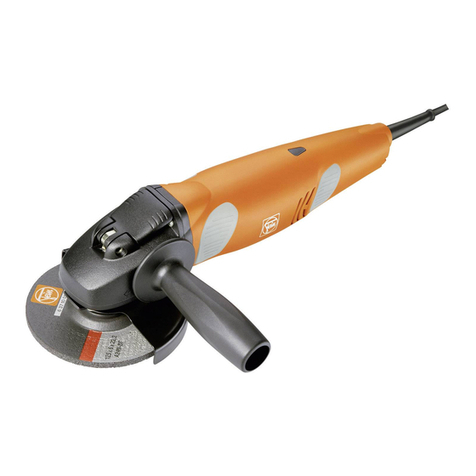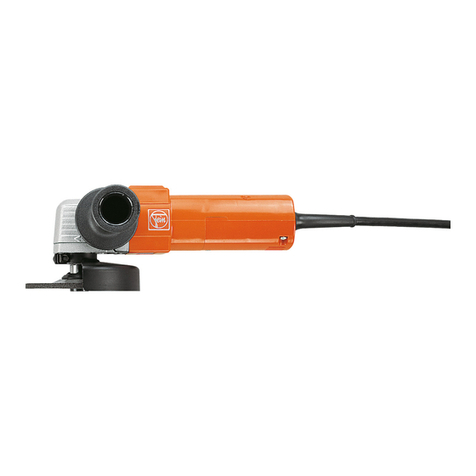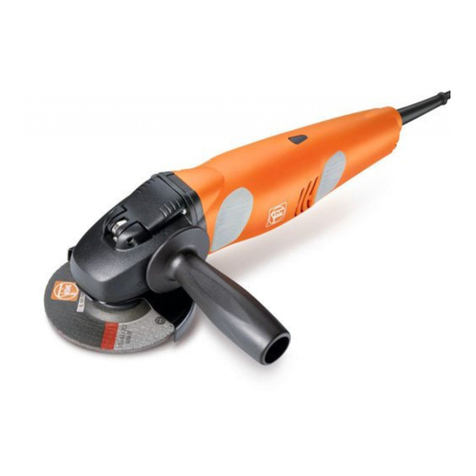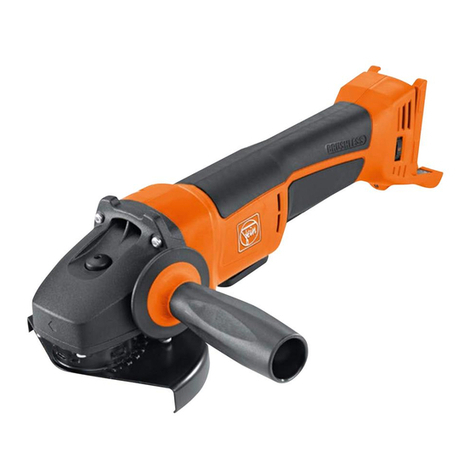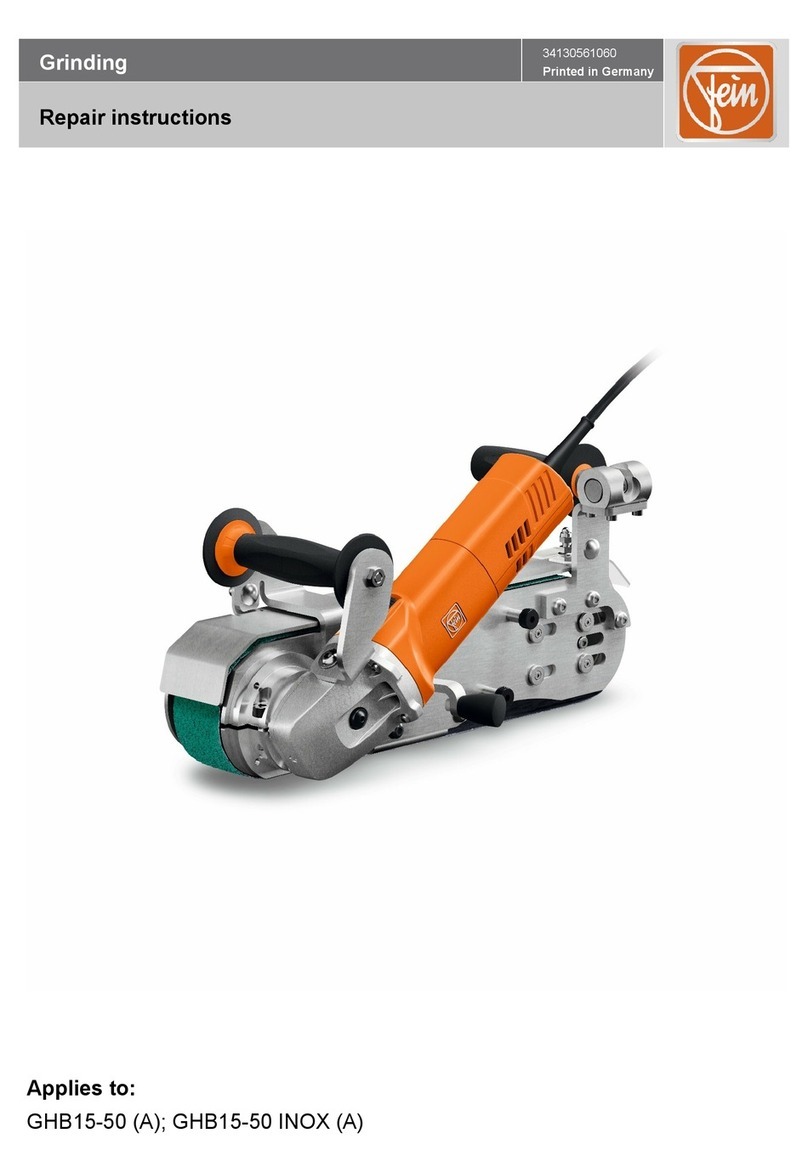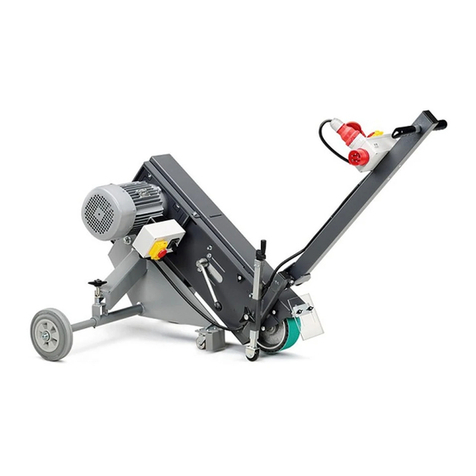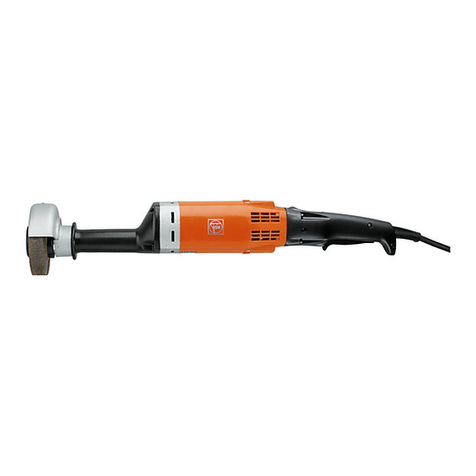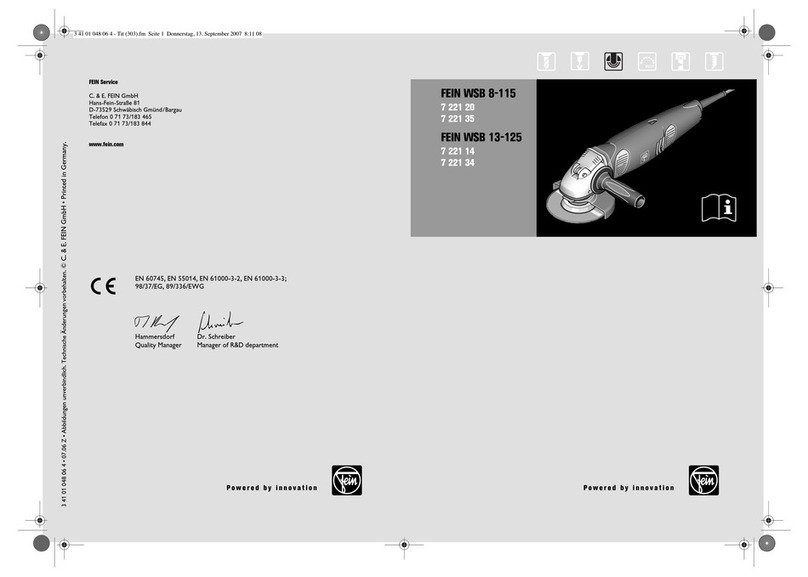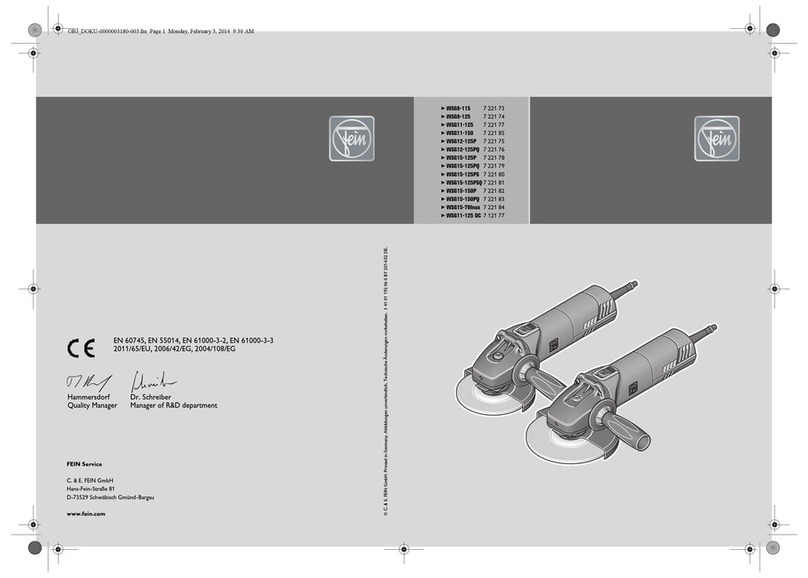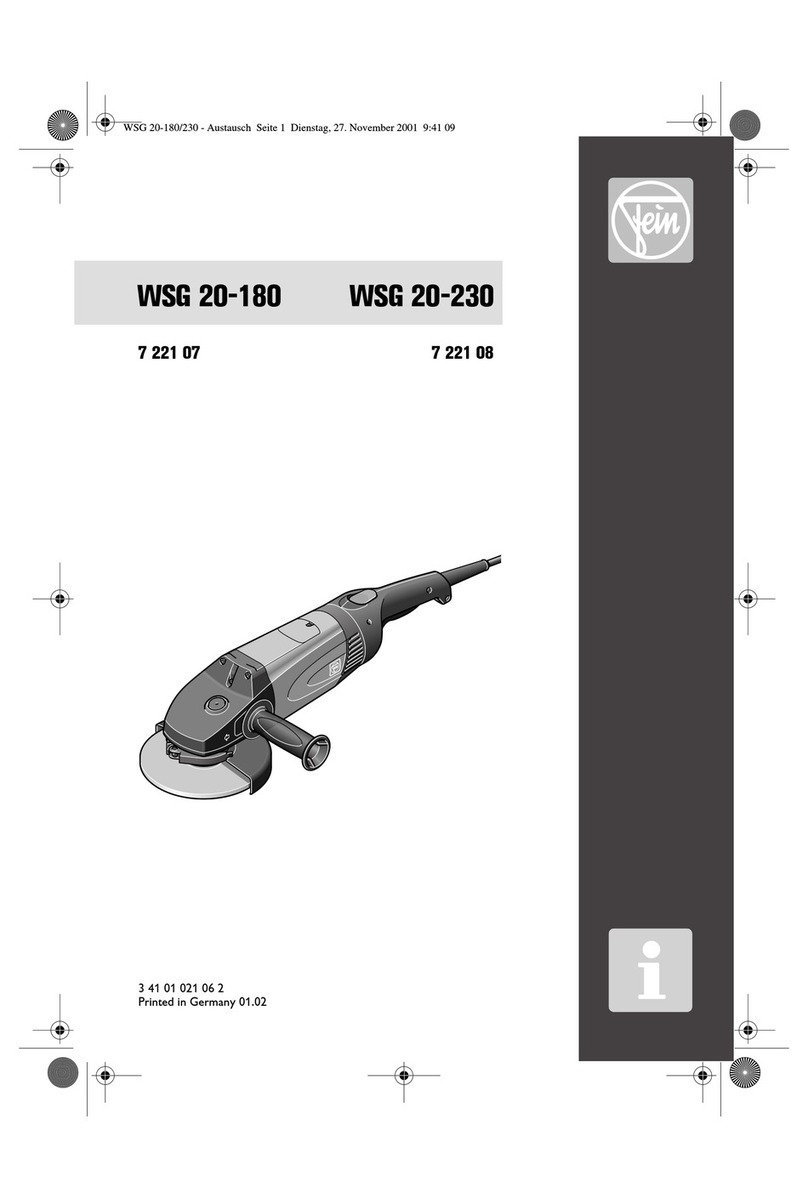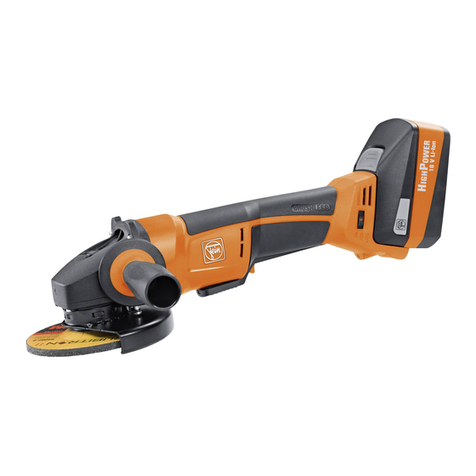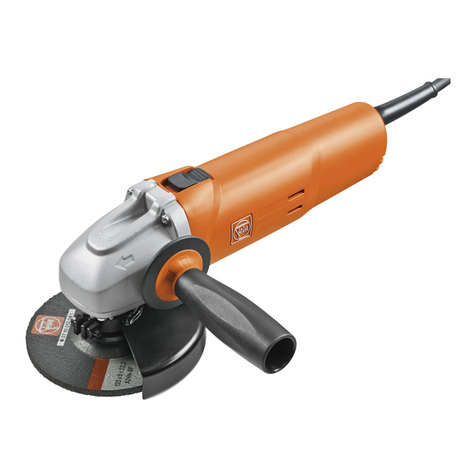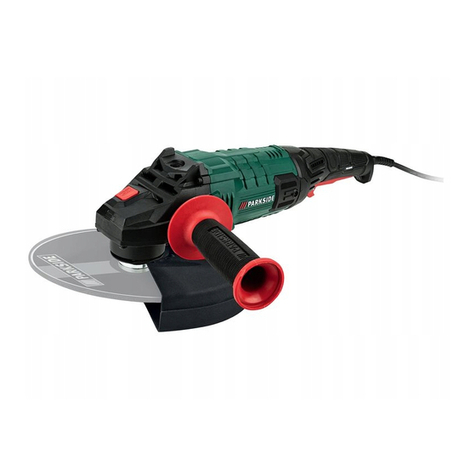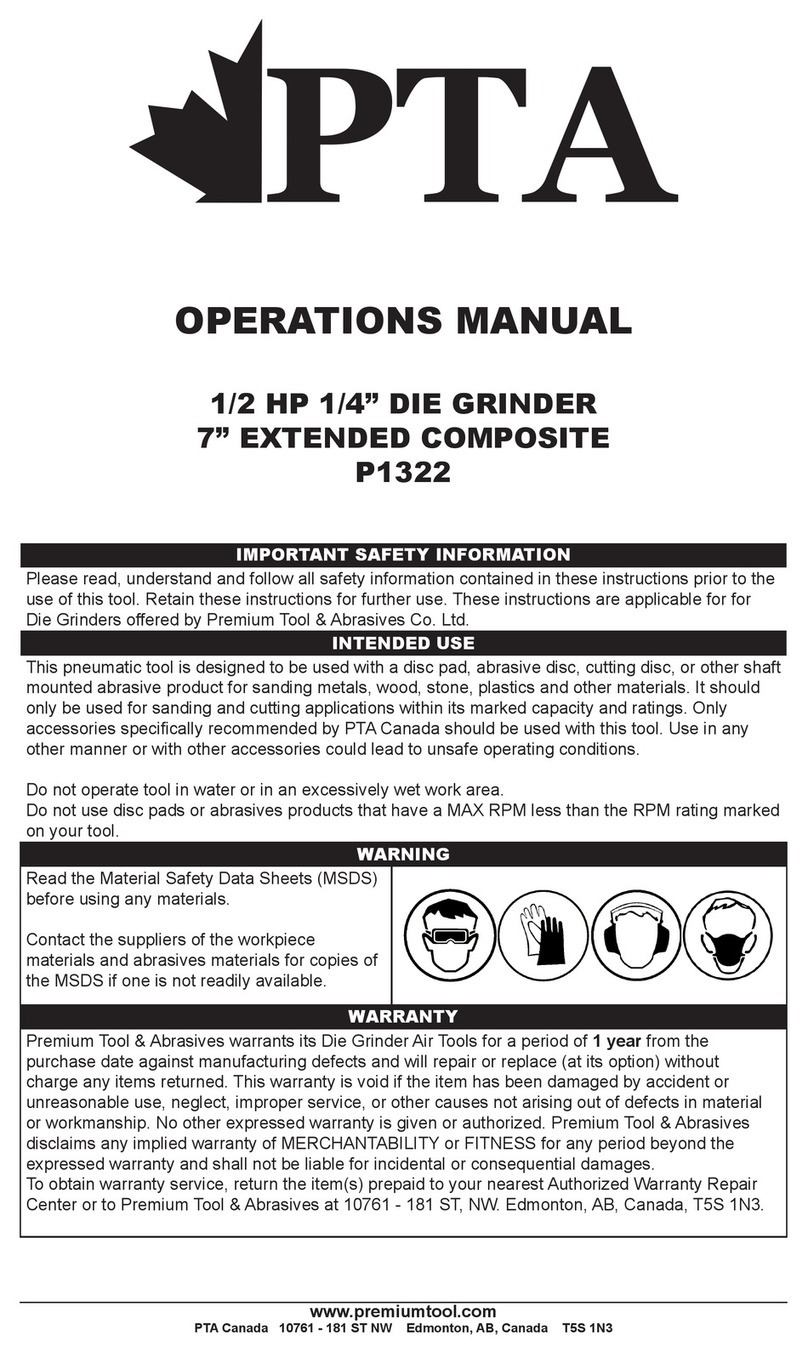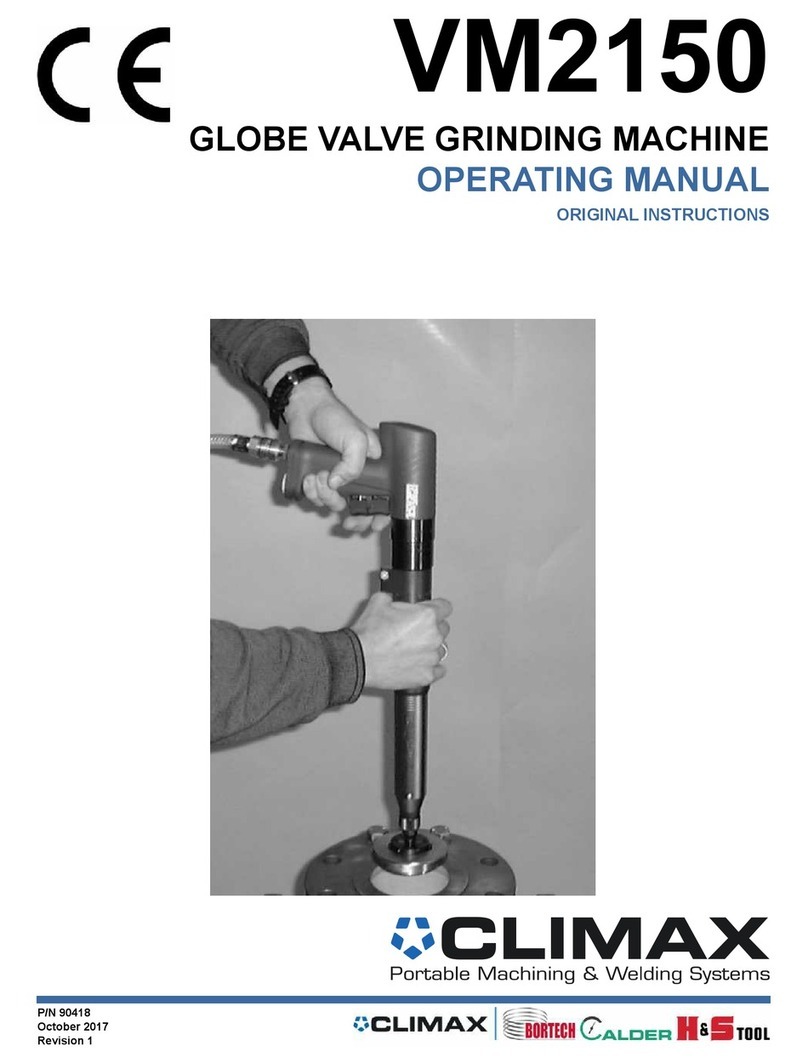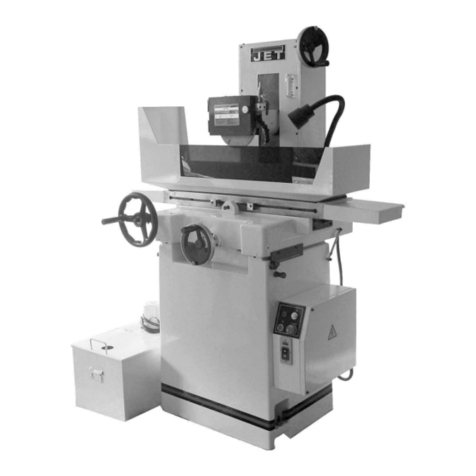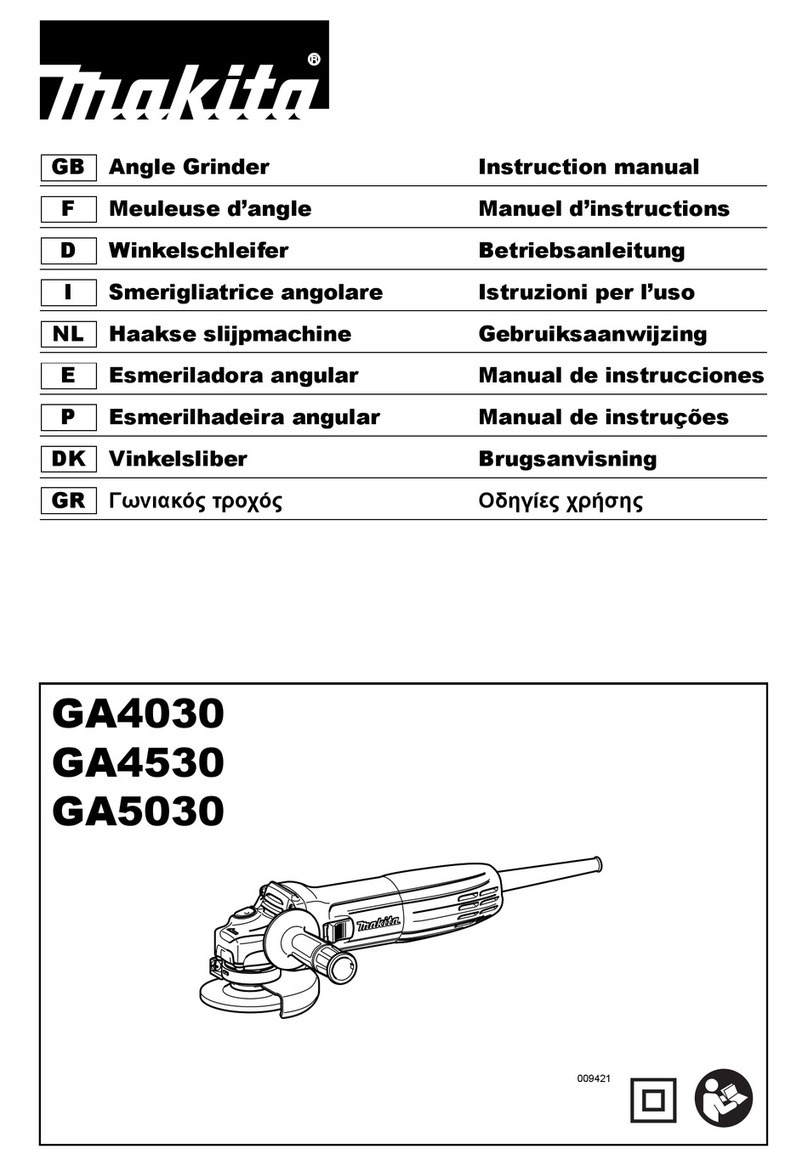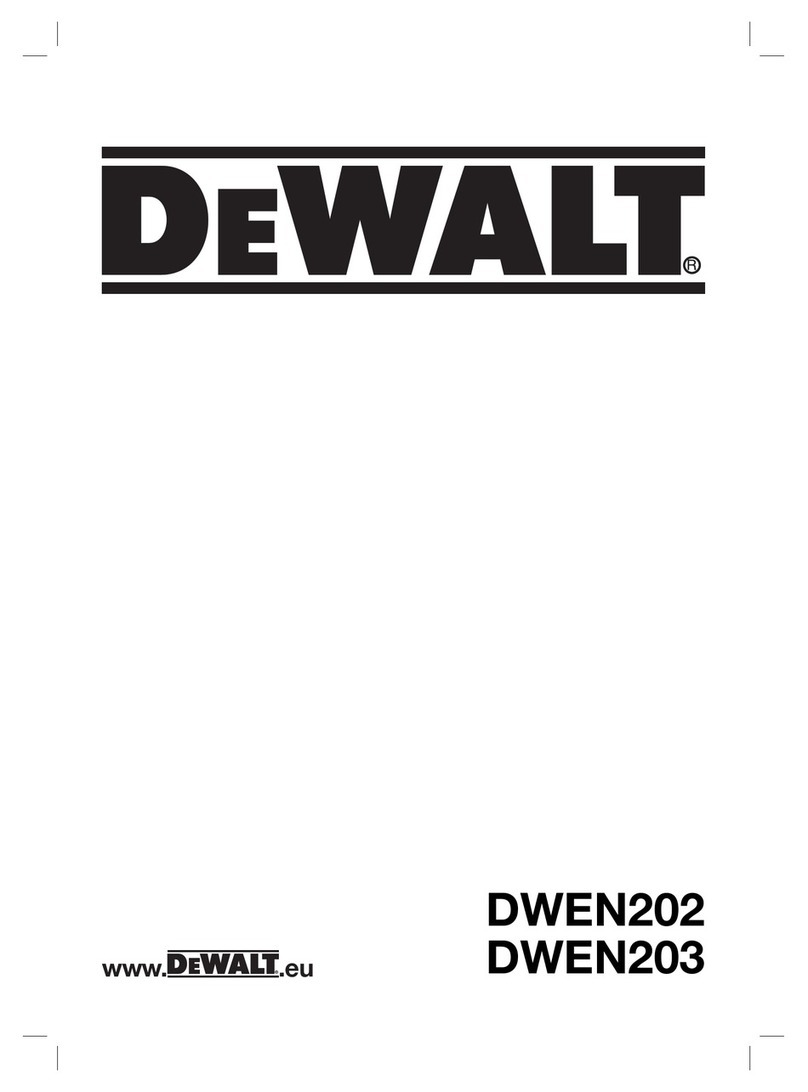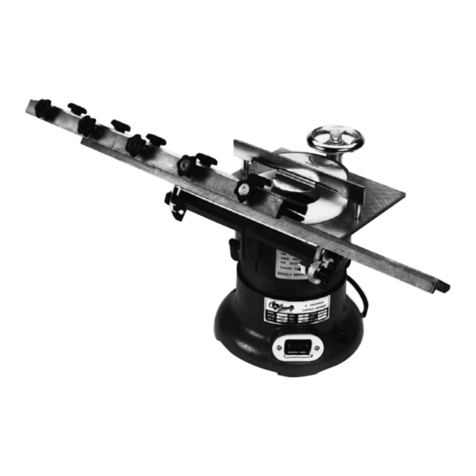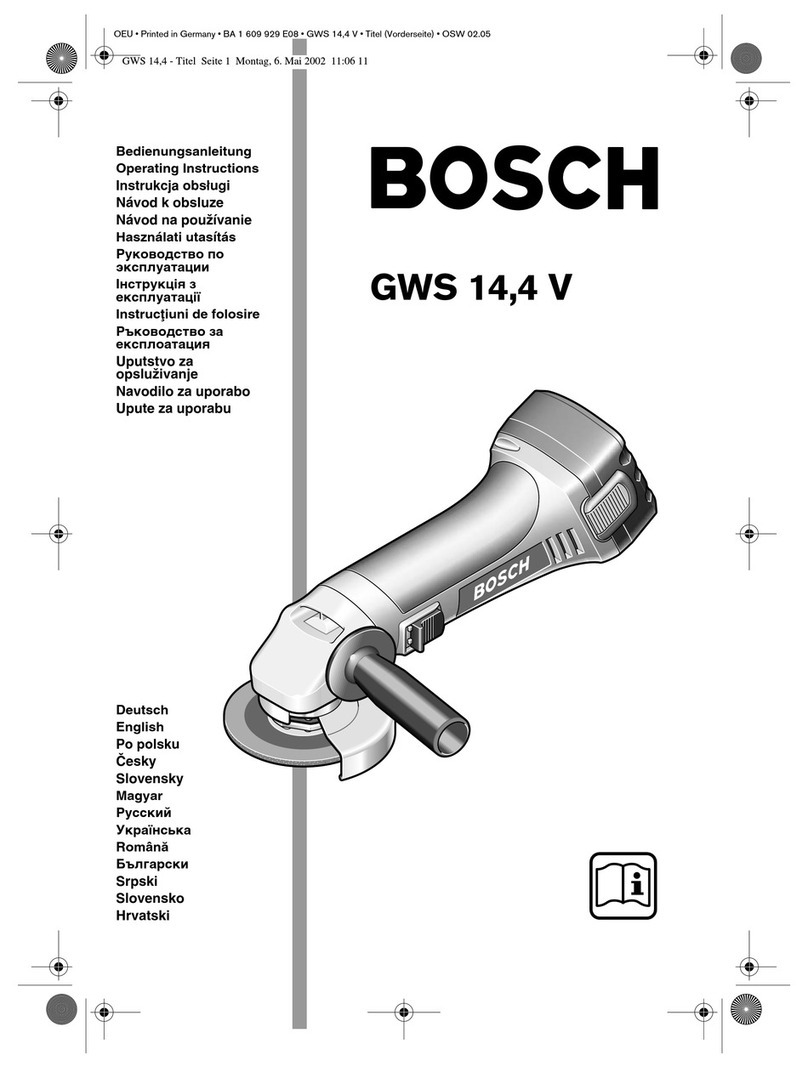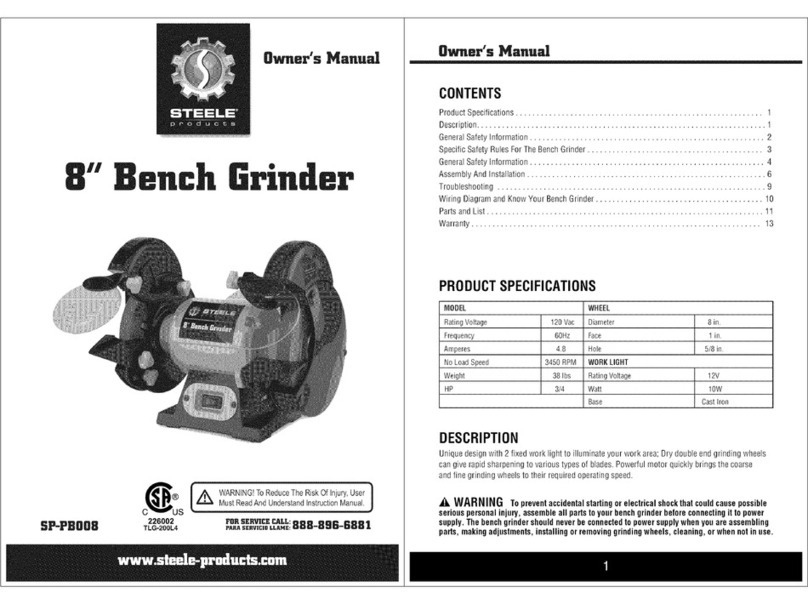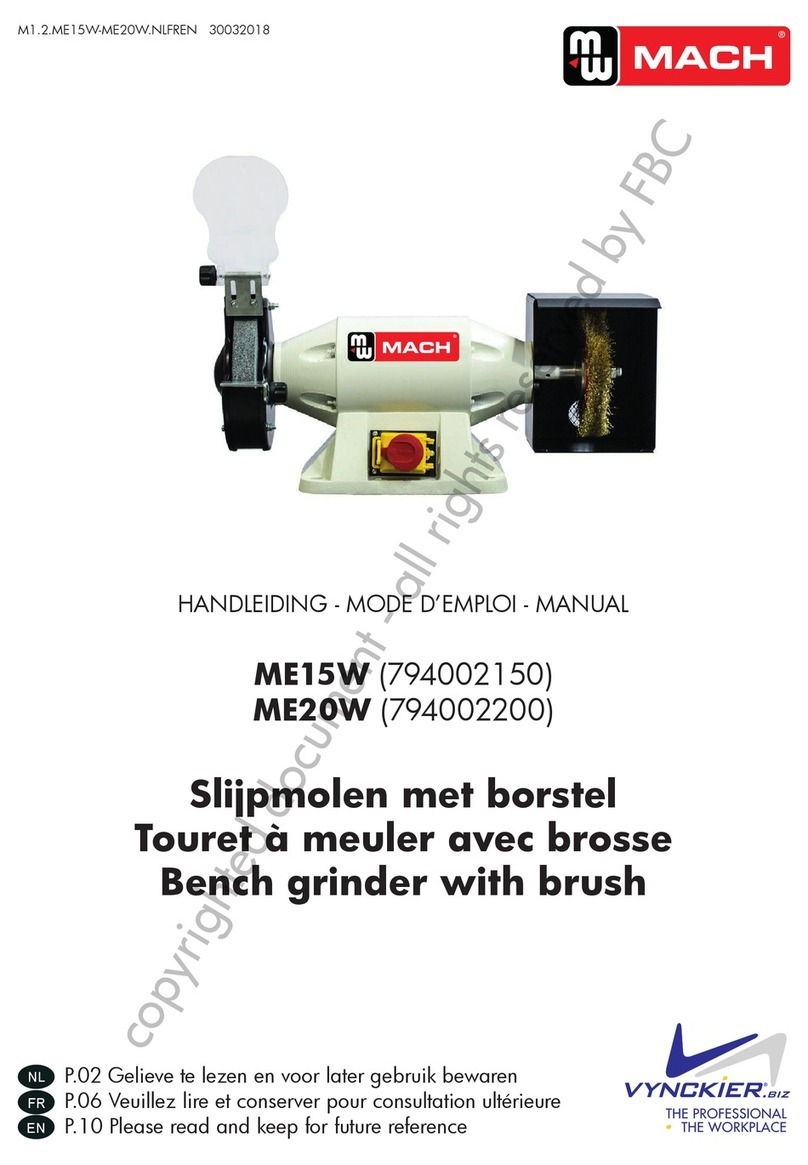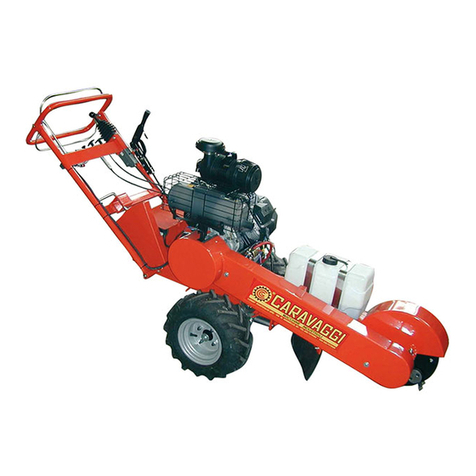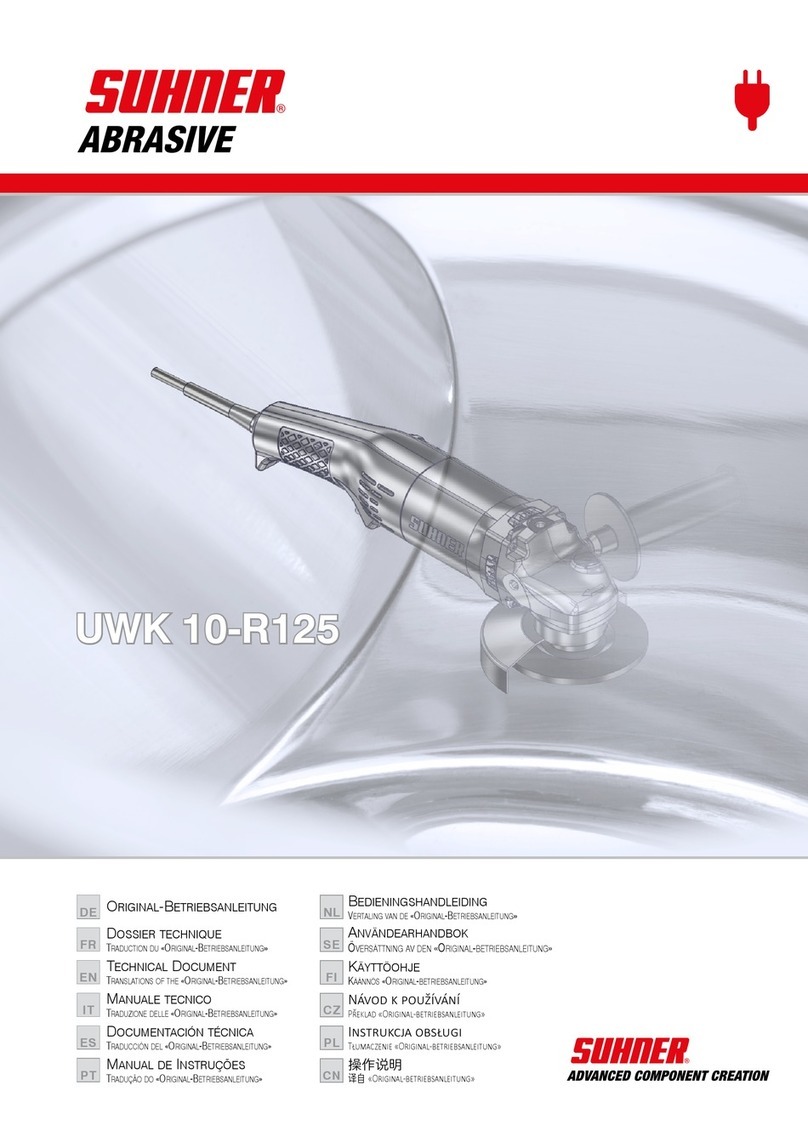
Deckel (80/90) einsetzen und verschrauben.
Elektronik (140) aufstecken, Lage beachten, auf
Druckpolster (820) achten.
Bei Bedarf Druckpolster (820, 130) austauschen.
Modulgehäuse (110) aufsetzen und verschrauben.
Schalter (910) anschließen, Anschlussplan Seite 5
beachten.
Handgriff-Unterteil (900) auf Modulgehäuse (110)
aufsetzen.
Schalter (910) mit Kabel (930) und Schutzschlauch
(920) einsetzen.
Verriegelungstaste (990) mit Druckfeder (980)
einsetzen.
Handgriff-Oberteil (1000) aufsetzen. Schrauben (1010)
einsetzen.
Achtung:
Zuerst Schrauben kabelseitig anziehen,
danach Schrauben motorseitig anziehen.
Lagerplatte
Filzring (330) und Abdeckscheibe (340) in Lagerplatte
(320) einlegen.
Kugellager (350) einpressen.
Abschlussplatte (360) einlegen und mit Schrauben
(370) verschrauben.
Ring (430) einsetzen und Kegelrad (440) aufpressen.
Dabei Rohr 6 41 01 025 00 8 für Tellerrad
verwenden.
Komplette Lagerplatte in Getriebegehäuse (300)
einsetzen und verschrauben.
Flankenspiel prüfen.
Ggf. mit Ausgleichscheiben (520) einjustieren.
Probelauf durchführen.
Lagerplatte abnehmen und 70 g Getriebefett
0 40 101 0100 4 einfüllen, Lagerplatte montieren.
Schutzhaube (780) montieren.
Handgriff (790) eindrehen. Flansche (800, 810)
montieren.
Funktionsprüfung, Probelauf und Sicherheits-
prüfung durchführen.
5.2.7
5.2.8
5.2.9
5.2.10
5.2.11
5.2.12
5.2.13
5.2.14
5.2.15
5.3
5.3.1
5.3.2
5.3.3
5.3.4
5.3.5
5.3.6
5.3.7
5.3.8
5.3.9
5.3.10
5.3.11
4.5
4.5.1
4.3.10
4.3.11
4.3.12
4.3.13
4.4
4.4.1
5.1
5.1.1
5.1.2
5.1.3
5.1.4
5.2
5.2.1
5.2.2
5.2.3
5.2.4
5.2.5
5.2.6
7 221 07/WSG 20-180/7 221 08/WSG 20-230
DE
Handgriff-Unterteil (900) abnehmen.
Schrauben (1010) lösen. Modulgehäuse (110) mit
Elektronik (140) abnehmen.
Grundplatte (120) abziehen.
Schrauben (70) lösen und Polpaket (60) demontieren.
Getriebegehäuse
Bei Bedarf Arretierbolzen (570) mit Durchschlag aus
Druckknopf (600) herausdrücken. Druckknopf wird
dabei zerstört und muss ersetzt werden.
Schalter
Bei Bedarf Einschaltsperre abnehmen, dazu Bolzen
entfernen. Auf Druckfeder achten! Kontaktplatte
(955) austauschen. Bolzen und Einschaltsperre
montieren.
5. Montage des Schleifers
Anker
Halteplatte (670) mit Filzring (680) und Abdeck-
scheibe (690) auf Ankerwelle auflegen.
Kugellager (700) aufpressen.
Kegeltrieb (710) erwärmen (ca. 100°C) und mit
Aufpressvorrichtung 6 41 01 024 00 4 aufpressen.
Kollektorseitiges Kugellager (750) aufpressen.
Getriebegehäuse und Motorgehäuse
Nadelhülse (310) bis zum Anschlag einpressen.
Bei Bedarf Arretierbolzen (570) mit aufgelegtem
Dichtungsring (580) durch Getriebegehäuse durch-
stecken, Feder (590) auflegen und neuen Druckknopf
(690) aufpressen.
Gummibuchse (650) in Getriebegehäuse (300)
einlegen.
Vormontierten Anker (660) in Getriebegehäuse (300)
einsetzen und verschrauben.
Auf Sicherungsscheibe (720) achten. Vorrichtung
6 41 01 020 00 0 verwenden.
Gummibuchse (740) und Polpaket (60) in Motorge-
häuse (10) einsetzen. Einbaulage beachten (siehe
Abb. Seite 9). Polpaket (60) verschrauben.
Grundplatte (120) aufstecken und mit Stecker von
Polpaket in Motorgehäuse einsetzen und arretieren.
Polpaketanschlusslitzen an Kohlehalter anschließen
und in die Nut der Kohlehalterplatte einlegen, Kohle-
halter (20) mit Kohlebürste (30) in Motorgehäuse
einsetzen und verschrauben.
Achtung: Der Kohlehalter wird mit vormontierter
Kohlebürste ausgeliefert.
Nach Einbau des neuen Kohlehalters muss die Zunge
der Spiralfeder in die Nut am Kohlehalter eingesetzt
werden. Dadurch wird die Kohlebürste frei beweglich
und liegt am Kollektor auf.
3
1 88 50 315 06 1 X 08.01

